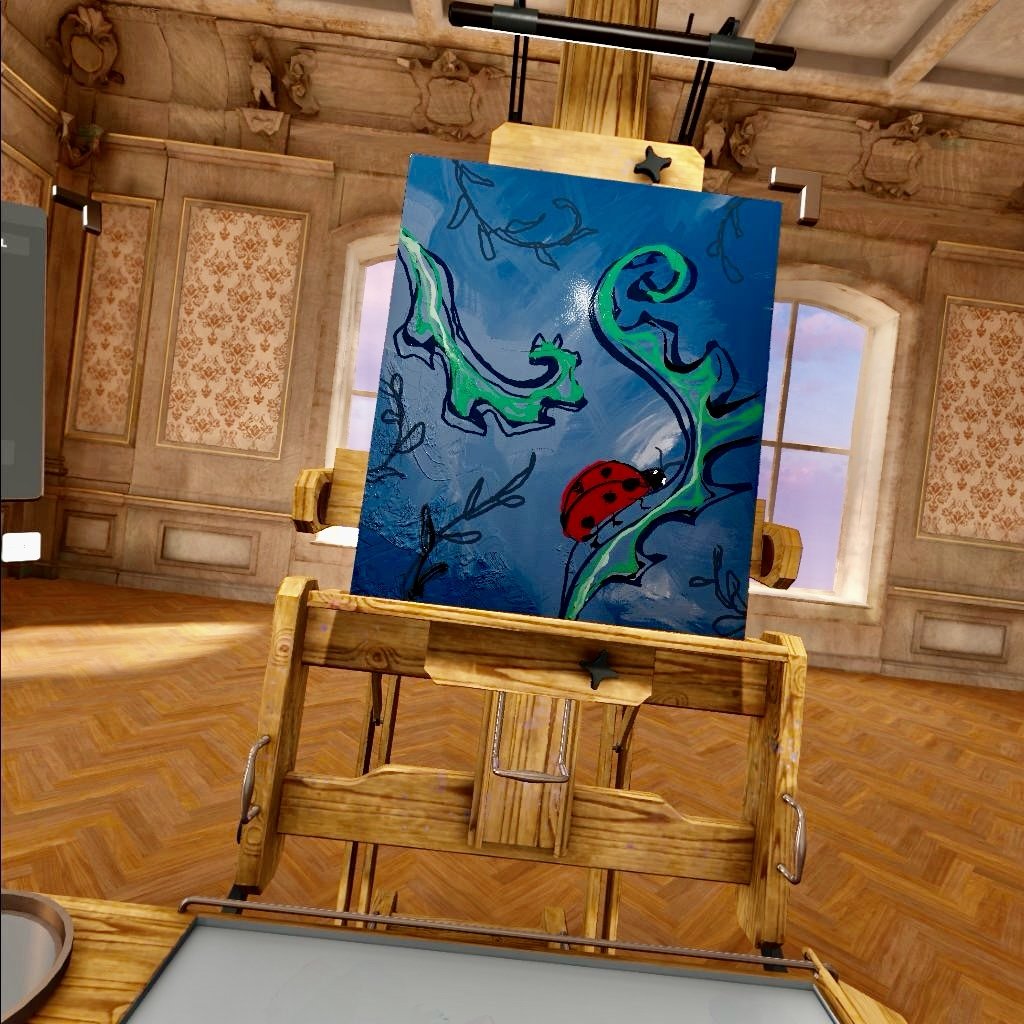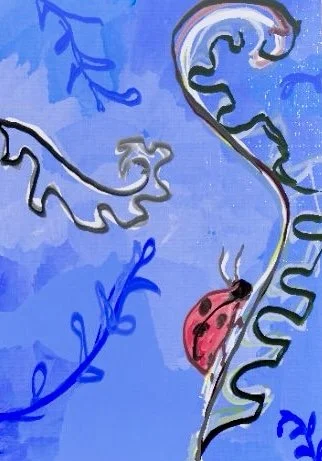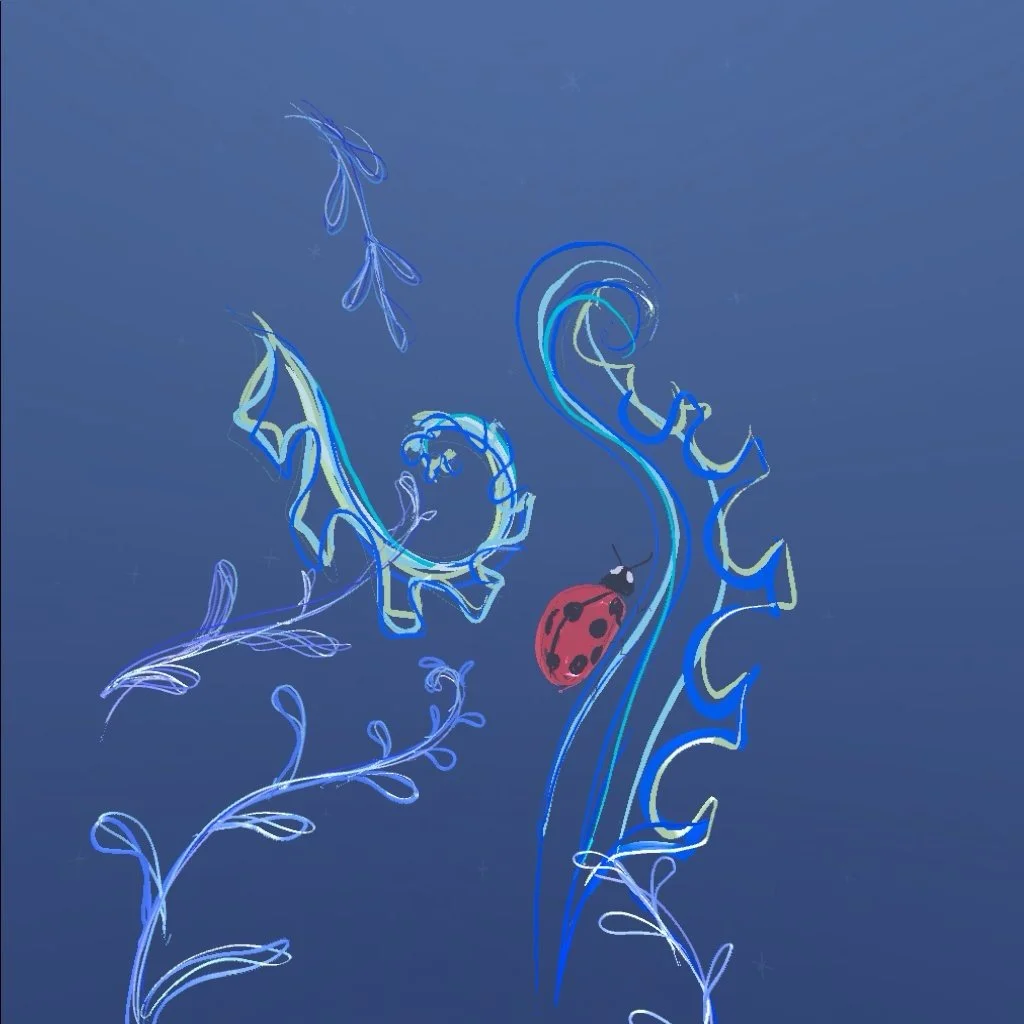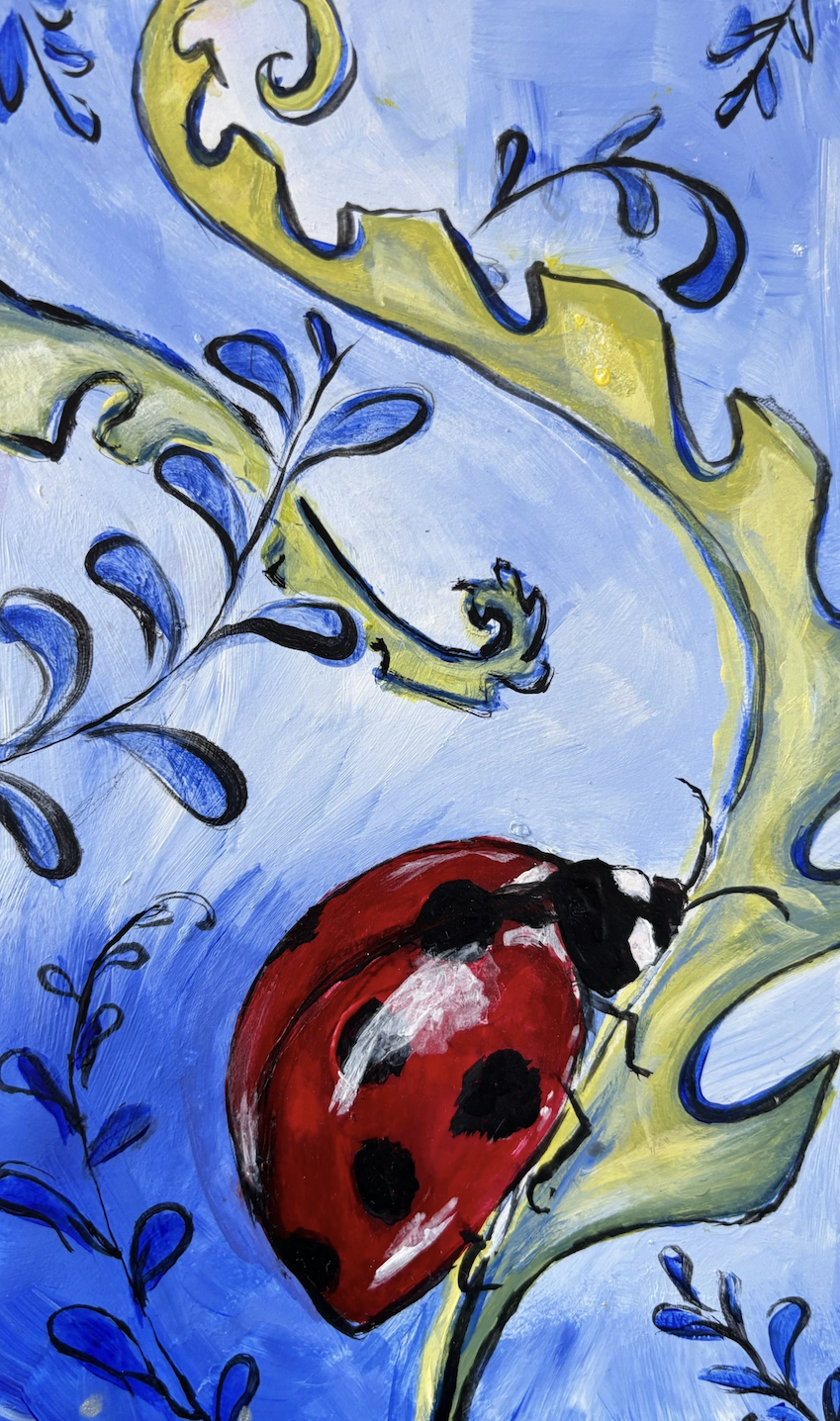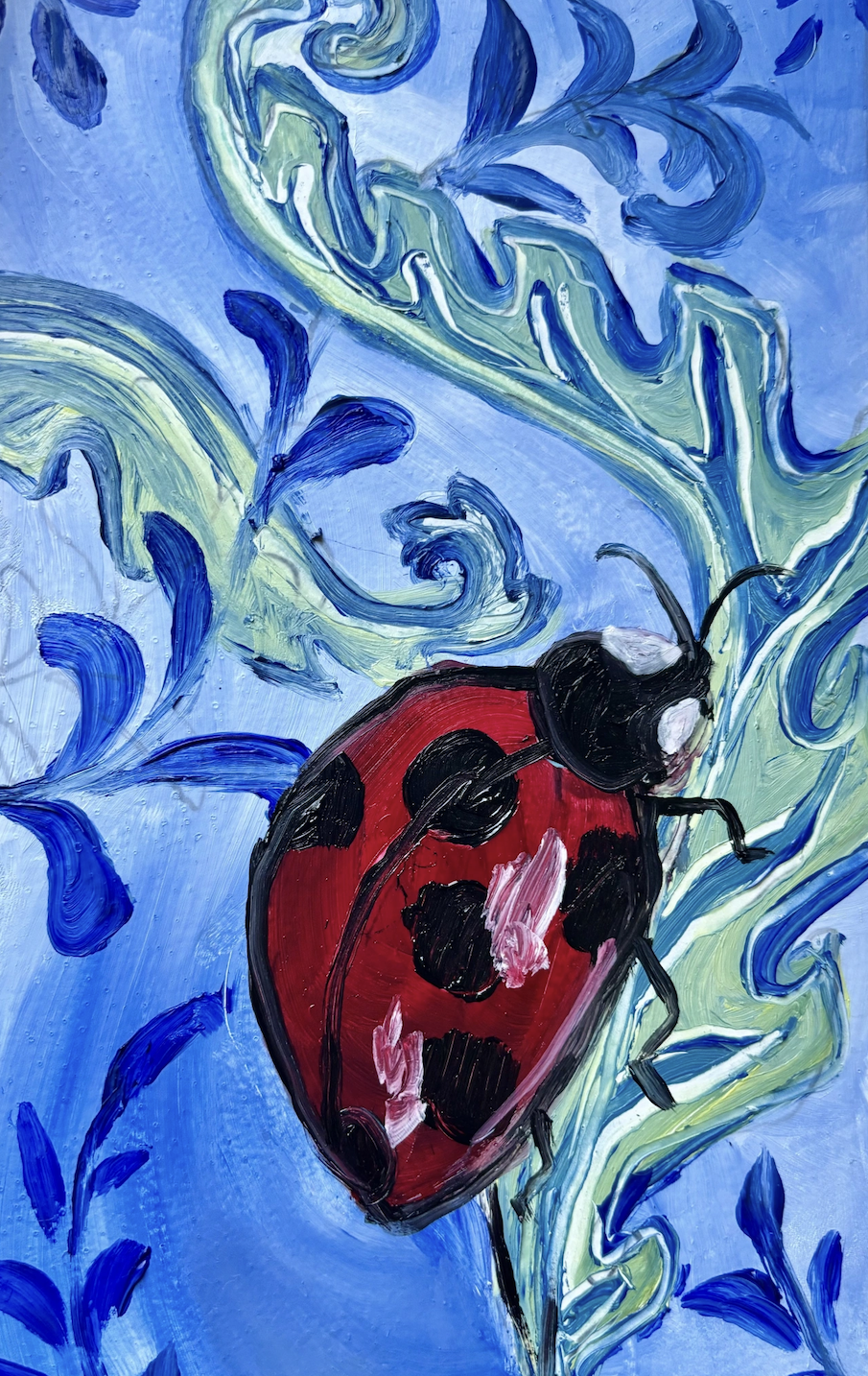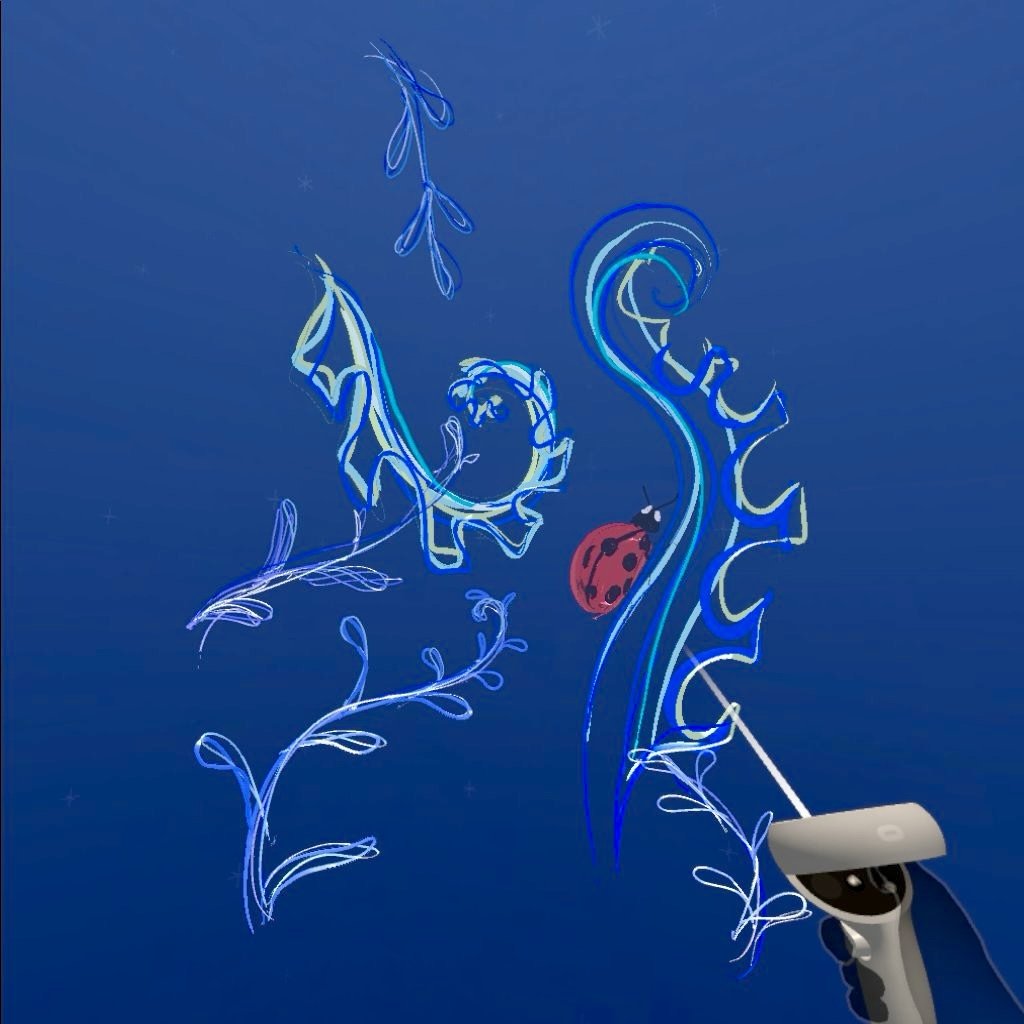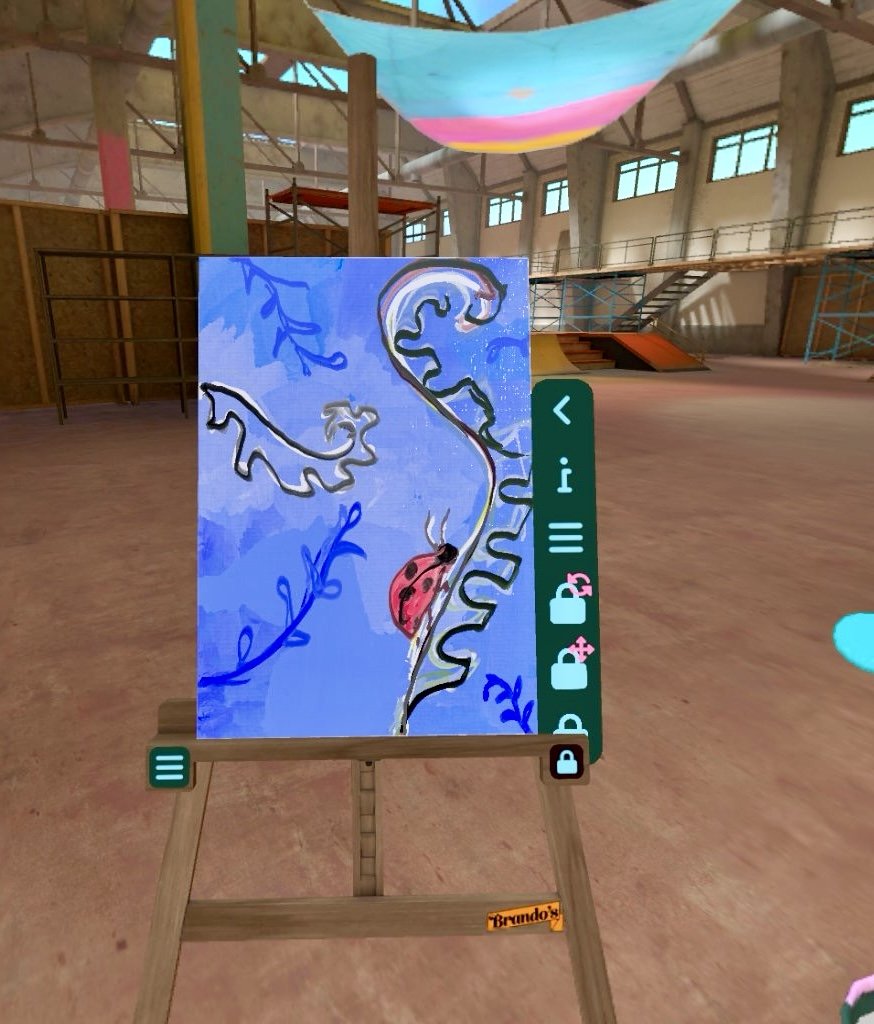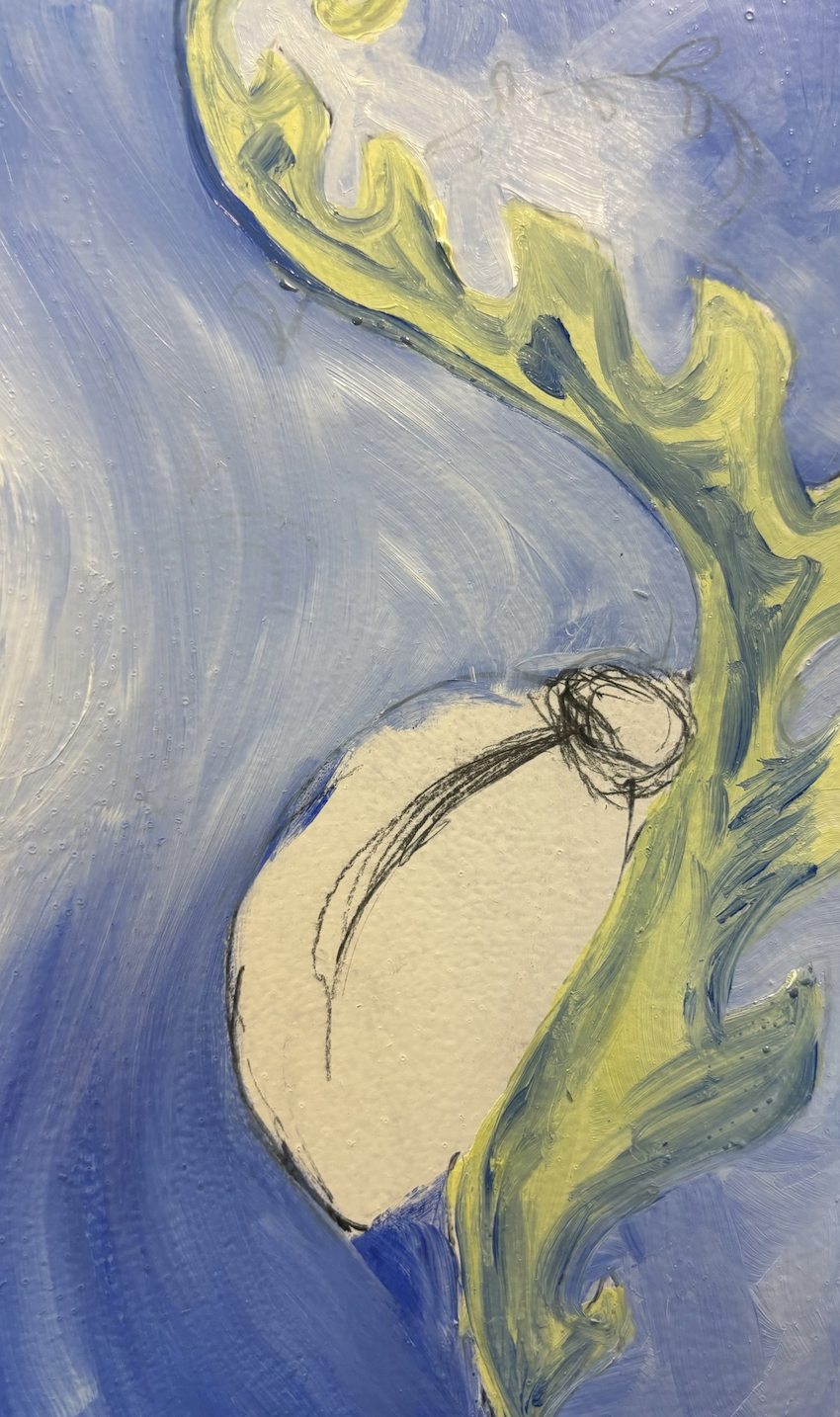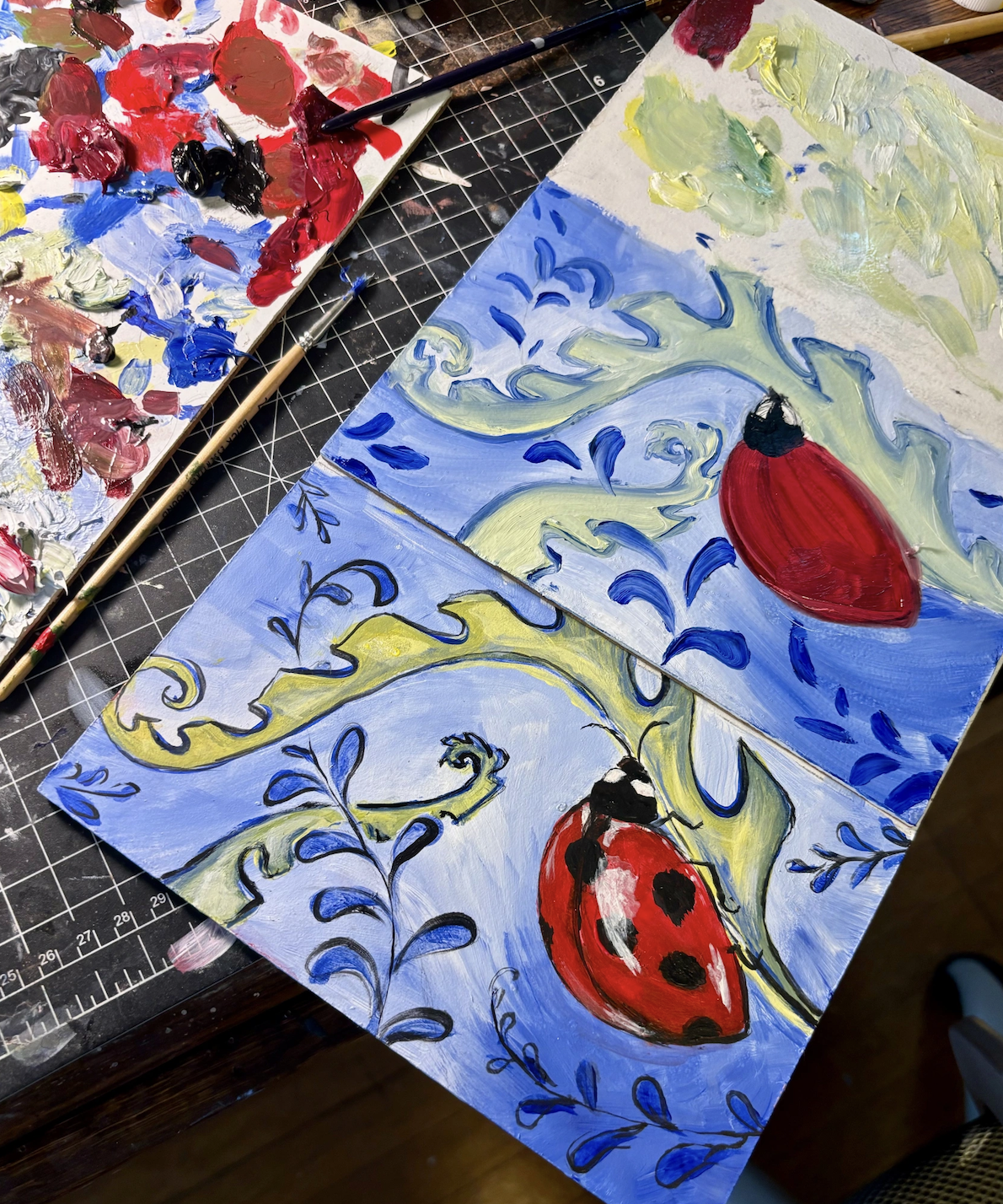By: Emma Fries
Introduction: Painting with Bugs
In the last two years, more than a dozen Virtual Reality (VR) tools have emerged, offering artists a wide range of mediums to express their creativity. These VR platforms have allowed every type of artist to showcase their talents in the Metaverse. This article delves into an exploration and comparison of VR, 2D painting software applications, comparing their capabilities against traditional oil and acrylic painting techniques. If you are an artist considering investing in a headset for your artistic endeavors or simply choosing an app, this article will provide a comprehensive side-by-side comparison of these programs with their real-life counterparts.
Tech in the Studio
As an artist deeply invested in two-dimensional art, time remains a challenge in my artistic practice. Setup, cleanup, and the mess associated with traditional painting often stall my productivity, especially within limited work windows. In response, I turned to painting software accessible through computers or iPads, particularly admiring Adobe's tools for their ability to replicate actual brushstrokes and mimic traditional mediums. With the rising prominence of digital tools in art, I'm intrigued by the potential of VR painting software.
In my quest for an ideal VR painting software, I encountered a lack of comprehensive reviews focusing solely on painting and 2D work. I've compiled resources and insights on three programs that caught my attention.
VR Background
As of December 2023, around 15 art-related software options were available. While this article won't delve into those specifics, one can explore fantastic overviews for comprehensive details on the broader VR art family, which includes VR painting apps:
Or – take a look at this table from 11 Tools for Painting, Modeling, Designing & Animating in VR to get this gist.
When it comes to software with painting capabilities, there are six contenders:
Tilt Brush: Tilt Brush, which preceded OpenBrush, was created by Google and began its development journey in 2015. It is available for purchase at $19.99. However, it was discontinued in 2021 due to insufficient market demand. Its legacy lives on through OpenBrush.
OpenBrush: Open Brush is the open-source iteration of Tilt Brush. Many of its features have been adopted by other VR programs, and numerous reviews hailed it as one of the top apps, as well as the best free option. Users report it as intuitive, catering to professionals and beginners alike.
MultiBrush: MultiBrush by Rendever is built upon the open-source code of Tilt Brush. It's priced at $19.99 and compatible with all four Oculus Quest models. Its functionality closely resembles that of Tilt Brush and OpenBrush.
King Spray Graffiti: Infection Ape's app offers a collaborative, multiplayer experience solely for graffiti art. Professional graffiti artists praise its authenticity, saying it feels remarkably close to the real deal. It costs 14.99 USD.
Vermillion: Vermilion's focus is simulating the oil painting experience in high detail. This is the debut program of indie developer Thomas van den Berge. It costs 19.99 USD. Reviews mark this app as relaxing and suitable for both beginnersand professionals, with a steep learning curve for some aspects and a great place to watch tutorials.
Painting VR: This app from Oisoi Studio is frequently compared to Vermillion. It feels more experimental, less straightforward, and similar to working with acrylic paint. It's set at a price of $19.99, and just like Vermillion, it lets you browse references within the app while you're painting.
For the purposes of this article, I picked Vermillion for oil painting in VR, Painting VR for acrylic application, and OpenBrush's 2D/3D blend stood out as well. Below is a comprehensive review of these three programs compared with traditional methods of painting. Note: All programs being reviewed are in experimental stages, with certain features yet to be fully available.
The Good and the Bad
Image created by author.
Artist's Note: I created this painting depicting a ladybug and a leaf to test each tool's shading, blending, and line-producing capabilities. The artwork incorporates both realistic and abstract elements, serving as a means to examine the VR's capacity to handle both styles.
Vermillion
Vermillion is painting software mimicking the real-life oil painting process. It is geared towards experienced oil painters with customizable brushes and tools for a smooth transition to digital artistry. While intuitive, its lifelike features might be difficult for those with limited previous oil painting experience. A big highlight is that it facilitates tutorial viewing, artwork downloads for printing delivered to your phone, and VR studio customization.
Image created by author via Vermillion.
Pros
Smooth translation of oil painting skills into the digital realm
Paint properties resemble real-life mediums
Accessible tutorials on YouTube for practice
Allows painting while seated or standing, minimizing motion sickness risk
There is no need to hold triggers; paint application depends on brush distance from the canvas
Cons
Lacks certain specialized oil painting tools, potentially limiting for users with specific workflows
While paint properties are similar, it might not effectively teach beginners important skills applicable to real-life painting practice
Painting VR
The Painting VR experience shares similarities with Vermillion, creating a studio-like atmosphere with an easel setup and video browser. While it offers a sit-down option, not all tools are easily accessible. Navigation involves controller teleportation for swift room movement, which could lead to motion sickness. Painting VR emphasizes an authentic studio feel, which is occasionally messy. Painting VR might scatter brushes or paint on the floor as well. Though a bit glitchy, Painting VR could be a beginner’s starting point for learning color composition. However, it lacks accessible features for detailed paintings akin to real-life scenarios that artists would expect from their usual medium.
Image created by author via Painting VR.
Pros:
Gives a feeling of actually painting on canvas
Offers a range of art tools from markers to spray paint
Cons:
Paint colors are very bright and don’t resemble a standard artist’s palette.
Excessive movement might trigger motion sickness
Exporting finished paintings is challenging, with lower image quality
OpenBrush
Open Brush, an evolution from Tiltbrush, stands at the core of numerous VR painting platforms. This 2D/3D hybrid tool reimagines 2D strokes as 3D installations, resembling sculpting more than traditional painting. It lacks canvas, color mixing, layering, and specific brush choices, and in place, you can walk through layers of paint adding strokes in between. The program allows life-sized creations. With beginner and advanced modes, it simplifies painting with varied paint types for the effortless creation of immersive environments. This method sets VR painting apart from traditional techniques.
Image created by author via OpenBrush.
Pros:
All tools are easily accessible without pausing for menu navigation
Ability to save and reproduce selected colors using the dropper tool
Advanced mode allows changes in lighting and brush tip shape
Cons:
It is a complicated process uploading reference pictures
Multiple account sign-ins are required for saving, uploading, and downloading work
Reference picture uploading only works on a PC with the latest version
Limited background choices
Acrylic Painting
Acrylic paint, water-based and quick-drying, allows for a faster workflow than oil paint. Its versatility spans textures from thick impastos to translucent washes. Notably, it adheres to diverse surfaces—canvas, paper, wood, and even metal. Water-soluble for easy cleanup, it can be thinned or layered for varied effects, leaving a durable finish once dry.
Image created by author via acrylic paint application.
Pros:
Fast drying time allows for quicker workflow
Versatile application and texture creation
Adheres to various surfaces
Water-soluble for easy cleanup
Offers durability and permanence once dried
Cons:
Quick drying time might pose challenges for blending and layering
Dries darker than when initially applied, affecting color matching
Less forgiving than oil paint, mistakes are harder to fix mistakes once
oil painting
Oil paint, the oldest medium, blends pigments in drying oil like linseed oil. Its oxidation-based drying offers diverse manipulation techniques. With paint thinner and Liquin, it achieves translucency, layering, and thick application. Adjusting oil content alters drying time, aiding blending and color development. Artists appreciate oil paint’s prolonged drying, allowing extensive blending. Yet, the wait between layers poses challenges and risks disturbing the work. Ventilation is vital due to chemicals.
Image created by author via oil paint application.
Pros:
Manipulation of drying time
Easy blending and layering
Offers permanence and durability once dried
Cons:
Long drying time can impede workflow
Risk of inadvertently disrupting wet layers
Requires well-ventilated workspace due to chemical properties
comparisons
Technical and Logistical Comparison
Chart created by author.
Studio Features Comparison
Chart created by author.
The Verdict
In my exploration of painting VR tools, I have seen firsthand these programs as they progress toward a promising future as competitors with the capabilities of traditional and digital art tools. We as a society as beginning to observe major developers such as Adobe develop their own VR programs, and it doesn't appear to be long until we see VR Art more frequently in both public and private art spaces.
However, VR painting as a medium has yet to reach the level of sophistication of a primary artistic medium. These programs are still in their foundational stages, and it was an interesting experience to go from using my phone and laptop, which have had dozens of iterations developed, to using VR headsets, which have only recently become available for personal use.
Navigating the VR headset was challenging– the multiple logins and lack of device compatibility made this a somewhat unwieldy experience. This experiment took an iPhone 15, MacBook Pro, and HP Envy 360to meet all the different software demands. I experimented with the Quest and Quest 2. Despite some improvements in Quest 2 headset quality, it still felt uncomfortable for prolonged use.
Among the programs, Vermillion stood out for its impressive reduction in motion sickness and its comfortable sit-down features, making it my go-to choice for traditional-style work. However, if I were to bring VR to my artistic practice, I would use OpenBrush for its ability to sculpt and work in 3D.
My experience with Painting VR mirrored the aspects of painting I find challenging to my real-life practice – a messy studio setup, losing paint brushes, and having to keep leaving my work to get new materials. Nonetheless, this might cater well to those seeking an authentic, messy studio experience or beginners learning color blending.
-
n.d. Quill by Smoothstep. Accessed December 14, 2023. https://quill.art/.
n.d. Infectious Ape. Accessed December 14, 2023. http://infectiousape.com/.
n.d. Tilt Brush by Google. Accessed December 14, 2023. https://www.tiltbrush.com/.
n.d. Open Brush. Accessed December 14, 2023. https://openbrush.app/.
n.d. Vermillion - VR Painting at its finest. Accessed December 14, 2023. https://vermillion-vr.com/.
n.d. PaintingVR | Learn to paint in virtual reality. Accessed December 14, 2023. https://www.paintingvr.xyz/.
“….” 2023. …. - YouTube. https://www.meta.com/quest/products/quest-2/?utm_source=gg&utm_medium=ps&utm_campaign=20039864114&utm_term=meta%20quest%20device&utm_content=672279338386&utm_funnel=dcap&&gclid=Cj0KCQiA7OqrBhD9ARIsAK3UXh1flWPGOdusk8rItv21HvSQk-AsjTQvA64MTyNffpmrMTqAiCDsDWY.
“….” 2023. …. - YouTube. https://www.adobe.com/creativecloud/campaign/pricing.html?gclid=Cj0KCQiA7OqrBhD9ARIsAK3UXh22Dh5sOLqZSEyb8zM8GRTbLBsw4NoGYjGFhrQotHMFwRXeEC-4hTAaAtX2EALw_wcB&sdid=KKQWQ&mv=search&ef_id=Cj0KCQiA7OqrBhD9ARIsAK3UXh22Dh5sOLqZSEyb8zM8GRTbLBsw4NoGYjGFhrQotHMFwRXe.
Blain, Amanda. 2022. “Vermillion VR Review - Painting In VR.” World Of Geek Stuff. https://www.worldofgeekstuff.com/vermillion-vr-review-painting-in-vr/.
BROADWAY, CODY. 2022. “Best VR Art Apps [FREE & PAID] | Kingspray, Gravity Sketch, Open Brush, etc.” YouTube. https://www.youtube.com/watch?v=SBnMxtcsWgk.
Campbell, Ian C. 2021. “Google's VR painting app is getting the axe, but it will live on as an open-source project.” The Verge. https://www.theverge.com/2021/1/26/22250915/tilt-brush-google-open-source-ending-development-vr-painting.
Kabir, Hasibul. 2023. “Oculus Drawing Apps: 10 Best to Use for your VR Paintings.” Windows Report. https://windowsreport.com/oculus-quest-vr-drawing/.
Lang, Ben. 2023. “11 Tools for Painting, Modeling, Designing & Animating in VR.” Road to VR. https://www.roadtovr.com/vr-painting-drawing-modeling-animation-art-tools-quest-pc/.
“Multibrush.” n.d. IMEX Lab. Accessed December 14, 2023. https://imex.psu.edu/project/multibrush/.
“Painting VR on Meta Quest | Quest VR Games.” n.d. Meta Store. Accessed December 14, 2023. https://www.meta.com/experiences/3106117596158066/.
“10 VR Apps For Artists.” 2022. Brian Sloan Artist. https://briansloanartist.com/10-vr-apps-for-artists/.

